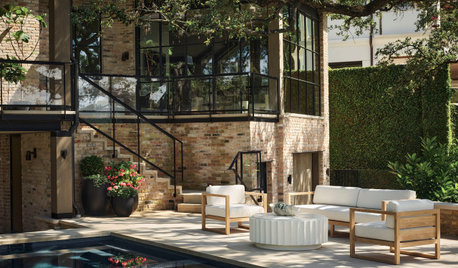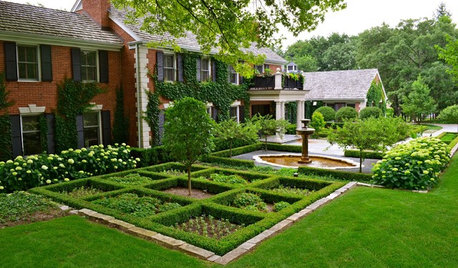Fruit trees still dormant?
pistolp
14 years ago
Related Stories

EDIBLE GARDENSHow to Grow 10 Favorite Fruit Trees at Home
Plant a mini orchard in fall, winter or early spring to enjoy fresh-off-the-tree fruit the following year
Full Story
GARDENING AND LANDSCAPINGCrazy for Fruit Trees
Whether a single citrus or a mini apple orchard, even the smallest landscape space can bear deliriously delicious fruit
Full Story
FARM YOUR YARDIf You Have Room for Only One Fruit Tree ...
Juice up a small garden with one of these easier-care or worth-the-effort fruit trees for a mild climate
Full Story
LANDSCAPE DESIGNWhile It’s Still Hot Outside, Design a Landscape for Cooling
Summer is a good time to plan for a yard that will bring temperatures down
Full Story
EDIBLE GARDENSGrow Plum Hybrids for Your Favorite Fruit Flavors
Plums are cozying up with apricots, peaches and even cherries — here’s how to grow these hybrids for the best aspects of each
Full Story
EDIBLE GARDENSHow to Add an Apple Tree to Your Edible Garden
Readily available, beautiful and fragrant, apple trees offer four-season interest along with crisp, juicy fruit
Full Story
GARDENING GUIDESHow to Keep Your Citrus Trees Well Fed and Healthy
Ripe for some citrus fertilizer know-how? This mini guide will help your lemon, orange and grapefruit trees flourish
Full Story
GARDENING GUIDESBoxwood: Still Shape-Shifting After 350 Years
Wild or mild, the humble boxwood still brings style and order to all kinds of gardens
Full Story
SELLING YOUR HOUSESave Money on Home Staging and Still Sell Faster
Spend only where it matters on home staging to keep money in your pocket and buyers lined up
Full Story
FALL GARDENING5 Fall Fruits You Can Grow in Containers
Brighten your porch or patio with a potted pomegranate, kumquat, blueberry bush or another great fall fruit
Full StoryMore Discussions






Okiedawn OK Zone 7
Okiedawn OK Zone 7
Related Professionals
Graham Landscape Architects & Landscape Designers · Port Royal Landscape Architects & Landscape Designers · Arlington Landscape Contractors · Ashburn Landscape Contractors · Bainbridge Island Landscape Contractors · Barrington Landscape Contractors · Battle Ground Landscape Contractors · Concord Landscape Contractors · Dallas Landscape Contractors · Davidson Landscape Contractors · East Chicago Landscape Contractors · North Richland Hills Landscape Contractors · Webster Groves Landscape Contractors · Golden Valley Landscape Contractors · Miami Decks, Patios & Outdoor EnclosurespistolpOriginal Author
gamebird
gamebird
Okiedawn OK Zone 7
tulsabrian
Okiedawn OK Zone 7
gamebird
ilene_in_neok
Okiedawn OK Zone 7